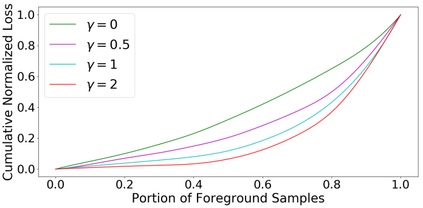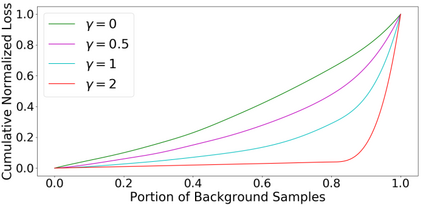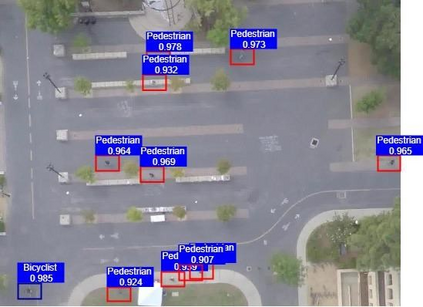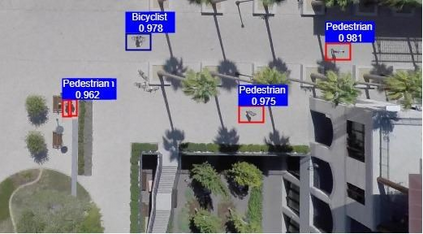Unmanned Aerial Vehicles (UAVs), have intrigued different people from all walks of life, because of their pervasive computing capabilities. UAV equipped with vision techniques, could be leveraged to establish navigation autonomous control for UAV itself. Also, object detection from UAV could be used to broaden the utilization of drone to provide ubiquitous surveillance and monitoring services towards military operation, urban administration and agriculture management. As the data-driven technologies evolved, machine learning algorithm, especially the deep learning approach has been intensively utilized to solve different traditional computer vision research problems. Modern Convolutional Neural Networks based object detectors could be divided into two major categories: one-stage object detector and two-stage object detector. In this study, we utilize some representative CNN based object detectors to execute the computer vision task over Stanford Drone Dataset (SDD). State-of-the-art performance has been achieved in utilizing focal loss dense detector RetinaNet based approach for object detection from UAV in a fast and accurate manner.
翻译:无人驾驶航空飞行器(无人驾驶飞行器)由于其普遍的计算能力,吸引了各行各业不同人士的兴趣。配备了视觉技术的无人驾驶飞行器可以用来建立无人驾驶飞行器本身的导航自主控制。此外,无人驾驶飞行器的物体探测可以用来扩大无人驾驶飞行器的使用范围,为军事行动、城市行政和农业管理提供无处不在的监视和监测服务。随着数据驱动技术的演变,机器学习算法,特别是深层学习方法,已被密集地用于解决不同传统的计算机视觉研究问题。现代革命神经网络的物体探测器可以分为两大类:一级物体探测器和两级物体探测器。在本研究中,我们利用一些有代表性的CNN物体探测器,执行斯坦福德龙数据集(SDDD)的计算机视觉任务。在利用以损失密度高的探测器RetinaNet方法快速准确地从无人驾驶飞行器探测物体方面,已经实现了国家技术的绩效。










